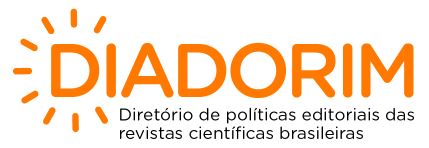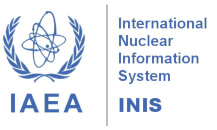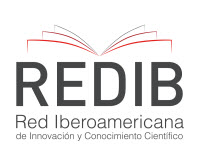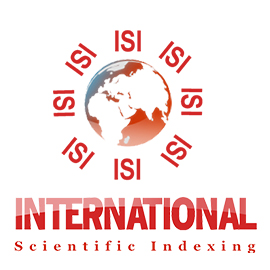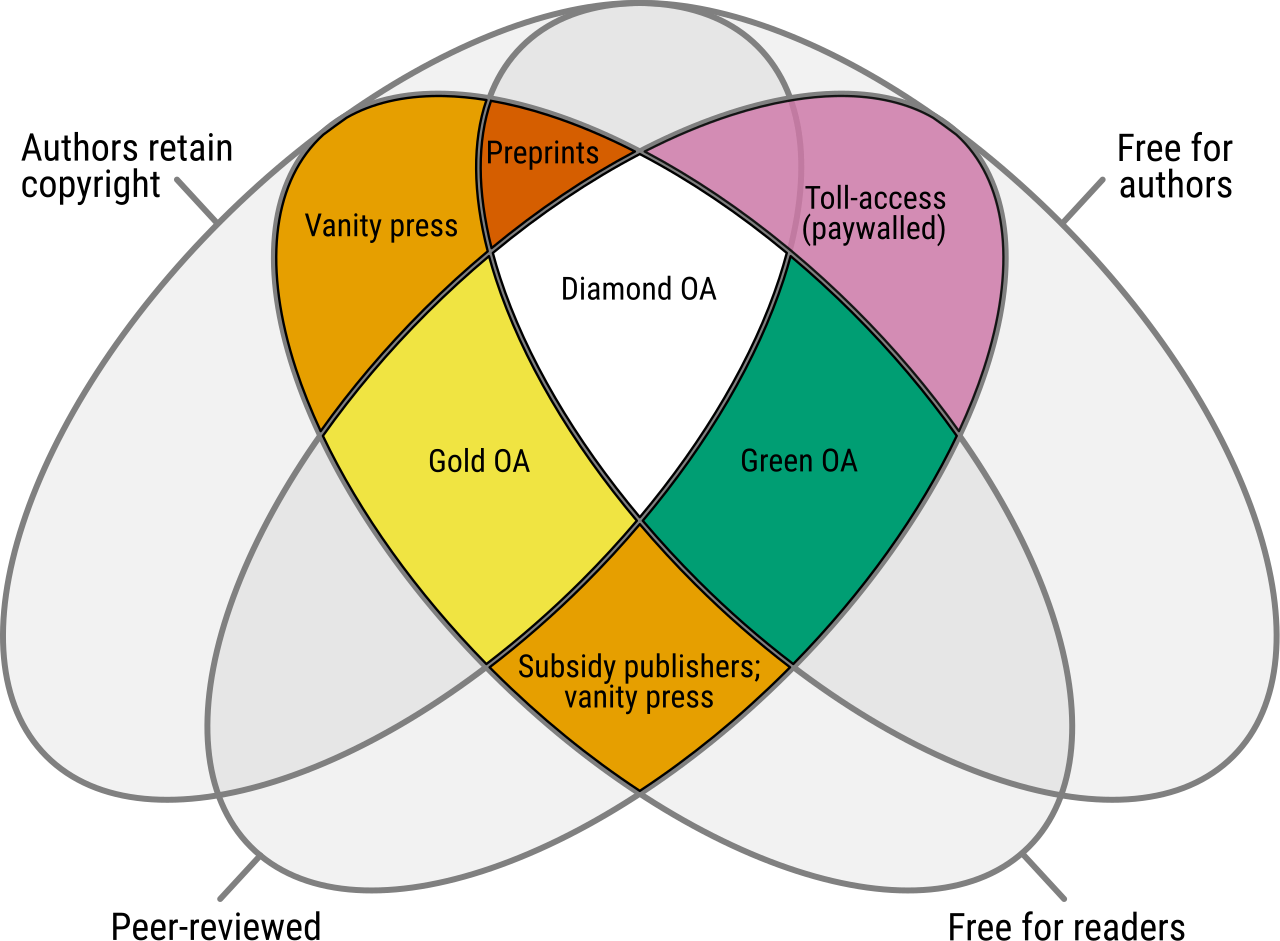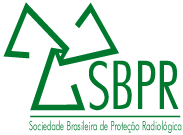Progress in the Design of New Gas-Based Neutron Detectors: A Critical Review
DOI:
https://doi.org/10.15392/2319-0612.2025.2893Palabras clave:
Neutron detection, Gas detector, He-3Resumen
The detection of neutrons through gas detectors has been an established practice for decades, with significant applications in nuclear reactors and monitoring by international organizations responsible for safeguarding the use of nuclear energy. Historically, these detectors utilized Helium-3 (He-3) as the ionization gas due to its reliability, safety, ease of use, insensitivity to gamma radiation, and high efficiency in thermal neutron detection. However, the scarcity in the supply of He-3 has created an urgent need to develop new gas-based neutron detectors which do not rely on this isotope. Although significant technological advances have been made, challenges remain, particularly in improving the sensitivity and resolution of detectors and enhancing their ability to discriminate between neutrons and other forms of radiation, such as gamma radiation. In response to these demands, the present study aims to review recent advancements in the development of gas-based neutron detectors that can replace Helium-3-based detectors. The review focuses on the advantages of these new technologies, particularly in terms of neutron capture efficiency and linear response over a wide range of energies. This analysis was conducted through a critical review of the scientific literature, focusing on articles published in scientific journals between 2015 and 2024. The evolution of gas detectors is examined, from the technologies available in 2015 to the most recent innovations in gas neutron detectors. The findings highlight substantial improvements in detection efficiency and detector resolution, along with advances in particle discrimination. There is also a growing trend towards miniaturization of devices and the exploration of new doping techniques to increase sensitivity and reduce costs. It is concluded that, despite the significant advances achieved in the development of gas-based neutron detectors, there remains considerable room for further improvement. Areas such as device miniaturization, the use of new dopants, cost-benefit analysis, and the application of these detectors in new fields still offer substantial opportunities for innovation and development.
Descargas
Referencias
[1] KOUZES, R. T. The 3He Supply Problem. Pacific Northwest National Laboratory, Richland, WA, PNNL-18388, 2009.
[2] U.S. Department of Energy’s Office of Nuclear Physics. Status of the Domestic and International Helium-3 (3He) Shortage. National Isotope Development Center Newsletter, Oak Ridge, TN, March 2014.
[3] COOPER, R. G. SNS Detector Plans. Nuclear Instruments and Methods in Physics Research A, Amsterdam, v. 529, n. 1-3, p. 394-398, 2004. DOI: https://doi.org/10.1016/j.nima.2004.05.018
[4] HENZLOVA, D. et al. Current Status of Helium-3 Alternative Technologies for Nuclear Safeguards. Los Alamos National Laboratory, Los Alamos, NM, LA-UR-15-21201, 2015.
[5] United States Government Accountability Office (GAO). Neutron detectors: Alternatives to using helium-3. Government Accountability Office, Washington, DC, GAO-11-753, 2011.
[6] PICKRELL, M. M. et al. The IAEA Workshop on Requirements and Potential Technologies for Replacement of 3He Detectors in IAEA Safeguards Applications. Journal of the Institute of Nuclear Materials Management, Deerfield, IL, v. 41, n. 2, p. 14-29, 2013.
[7] KOUZES, R. T. et al. Boron-10 Based Neutron Coincidence Counter for Safeguards. IEEE Transactions on Nuclear Science, Piscataway, NJ, v. 61, n. 5, p. 2608-2618, 2014. DOI: https://doi.org/10.1109/TNS.2014.2353619
[8] LINTEREUR, A. T. et al. Alternatives to Helium-3 for Neutron Multiplicity Counters. 2012 IEEE Nuclear Science Symposium and Medical Imaging Conference Record (NSS/MIC), Anaheim, CA., p. 547-553, 2012. DOI: https://doi.org/10.1109/NSSMIC.2012.6551168
[9] KITCHENHAM, B. Guidelines for performing Systematic Literature Reviews in Software Engineering, Version 2.3. EBSE Technical Report EBSE-2007-01, Keele University and University of Durham, 2007.
[10] JAMIL, M. et al. Thermal neutron response of a boron-coated GEM detector via GEANT4 Monte Carlo code. Applied Radiation and Isotopes, v. 95, p. 90–93, 2015. DOI: https://doi.org/10.1016/j.apradiso.2014.09.023
[11] KIM, H. G. et al. Thermal neutron simulation response of GEM-based detectors with the FLUKA-MC package. Measurement, v. 60, p. 71–77, 2015. DOI: https://doi.org/10.1016/j.measurement.2014.09.076
[12] CELENTANO, G. et al. 10B enriched film deposited by e-beam technique on Al2O3 substrate for high efficiency thermal neutron detector. Surface and Coatings Technology, v. 265, p. 160–165, 2015. DOI: https://doi.org/10.1016/j.surfcoat.2015.01.041
[13] AZA, E. et al. Neutron beam monitoring for time-of-flight facilities with gaseous detectors. Nuclear Instruments and Methods in Physics Research Section A: Accelerators, Spectrometers, Detectors and Associated Equipment, v. 806, p. 14–20, 2015. DOI: https://doi.org/10.1016/j.nima.2015.09.054
[14] FLIERL, B. et al. TPC-like readout for thermal neutron detection using a GEM-detector. Nuclear Instruments and Methods in Physics Research Section A: Accelerators, Spectrometers, Detectors and Associated Equipment, v. 824, p. 528–531, 2016. DOI: https://doi.org/10.1016/j.nima.2015.11.094
[15] LI, K. et al. Study of a nTHGEM-based thermal neutron detector. Chinese Physics C, v. 40, n. 7, p. 076002, 2016. DOI: https://doi.org/10.1088/1674-1137/40/7/076002
[16] ALBANI, G. et al. Evolution in boron-based GEM detectors for diffraction measurements: from planar to 3D converters. Measurement Science and Technology, v. 27, n. 11, p. 115902, 2016. DOI: https://doi.org/10.1088/0957-0233/27/11/115902
[17] SANTONI, A. et al. Physical–chemical characterization of a GEM side-on 10B-based thermal neutron detector and analysis of its neutron diffraction performances. Nuclear Instruments and Methods in Physics Research Section A: Accelerators, Spectrometers, Detectors and Associated Equipment, v. 906, p. 83–87, 2018. DOI: https://doi.org/10.1016/j.nima.2018.07.045
[18] CROCI, G. et al. I-BAND-GEM: a new way for improving BAND-GEM efficiency to thermal and cold neutrons. The European Physical Journal Plus, v. 134, n. 4, p. 166, 2019. DOI: https://doi.org/10.1140/epjp/i2019-12522-5
[19] ZHOU, J. et al. Highly efficient GEM-based neutron detector for China Spallation Neutron Source. Nuclear Instruments and Methods in Physics Research Section A: Accelerators, Spectrometers, Detectors and Associated Equipment, v. 953, p. 163051, 2020. DOI: https://doi.org/10.1016/j.nima.2019.163051
[20] FANG, Z. et al. Study of uniform drift electric field used for boron-lined honeycomb neutron detector. Nuclear Instruments and Methods in Physics Research Section A: Accelerators, Spectrometers, Detectors and Associated Equipment, v. 954, p. 161431, 2020. DOI: https://doi.org/10.1016/j.nima.2018.10.109
[21] ALBANI, G. et al. High-rate measurements of the novel BAND-GEM technology for thermal neutron detection at spallation sources. Nuclear Instruments and Methods in Physics Research Section A: Accelerators, Spectrometers, Detectors and Associated Equipment, v. 957, p. 163389, 2020. DOI: https://doi.org/10.1016/j.nima.2020.163389
[22] ZHOU, J. et al. A sealed ceramic GEM-based neutron detector. Nuclear Instruments and Methods in Physics Research Section A: Accelerators, Spectrometers, Detectors and Associated Equipment, v. 995, p. 165129, 2021. DOI: https://doi.org/10.1016/j.nima.2021.165129
[23] ZHOU, J. et al. A stopping layer concept to improve the spatial resolution of gas-electron-multiplier neutron detector. Chinese Physics B, v. 31, n. 5, p. 050702, 2022. DOI: https://doi.org/10.1088/1674-1056/ac398e
[24] YANG, T. et al. A Novel Method to Improve the Spatial Resolution of GEM Neutron Detectors With a Stopping Layer. IEEE Transactions on Nuclear Science, v. 69, n. 1, p. 68–77, 2022. DOI: https://doi.org/10.1109/TNS.2021.3135929
[25] EDWARDS, N. S. et al. Neutron sensitivity of 10B4C-coated aluminum honeycomb using a single-anode wire, P-10 continuous-gas-flow proportional counter. Nuclear Instruments and Methods in Physics Research Section A: Accelerators, Spectrometers, Detectors and Associated Equipment, v. 898, p. 85–89, 2018. DOI: https://doi.org/10.1016/j.nima.2018.04.046
[26] MURARO, A. et al. Directionality properties of the nGEM detector of the CNESM diagnostic system for SPIDER. Nuclear Instruments and Methods in Physics Research Section A: Accelerators, Spectrometers, Detectors and Associated Equipment, v. 916, p. 47–50, 2019. DOI: https://doi.org/10.1016/j.nima.2018.10.187
[27] ANJOMANI, Z. et al. Development of a multi-element microdosimetric detector based on a thick gas electron multiplier. Nuclear Instruments and Methods in Physics Research Section A: Accelerators, Spectrometers, Detectors and Associated Equipment, v. 847, p. 117–124, 2017. DOI: https://doi.org/10.1016/j.nima.2016.11.051
[28] VAHSEN, S. E. et al. 3-D tracking in a miniature time projection chamber. Nuclear Instruments and Methods in Physics Research Section A: Accelerators, Spectrometers, Detectors and Associated Equipment, v. 788, p. 95–105, 2015. DOI: https://doi.org/10.1016/j.nima.2015.03.009
[29] PISCITELLI, F. et al. The Multi-Blade Boron-10-based neutron detector for high intensity neutron reflectometry at ESS. Journal of Instrumentation, v. 12, n. 03, p. P03013–P03013, 2017. DOI: https://doi.org/10.1088/1748-0221/12/03/P03013
[30] MAURI, G. et al. Fast neutron sensitivity of neutron detectors based on Boron-10 converter layers. Journal of Instrumentation, v. 13, n. 03, p. P03004–P03004, 2018. DOI: https://doi.org/10.1088/1748-0221/13/03/P03004
[31] QIU, L. et al. Simulation and optimization of the boron-lined MWPC neutron detectors. Radiation Detection Technology and Methods, v. 5, n. 1, p. 42–52, 2021. DOI: https://doi.org/10.1007/s41605-020-00216-7
[32] LIU, L. et al. Realization of a thin boron layer neutron beam monitor. Nuclear Instruments and Methods in Physics Research Section A: Accelerators, Spectrometers, Detectors and Associated Equipment, v. 1045, p. 167632, 2023. DOI: https://doi.org/10.1016/j.nima.2022.167632
[33] BOUGAMONT, E. et al. Neutron spectroscopy with the Spherical Proportional Counter based on nitrogen gas. Nuclear Instruments and Methods in Physics Research Section A: Accelerators, Spectrometers, Detectors and Associated Equipment, v. 847, p. 10–14, 2017. DOI: https://doi.org/10.1016/j.nima.2016.11.007
[34] GIOMATARIS, I. et al. Neutron spectroscopy: The case of the spherical proportional counter. Nuclear Instruments and Methods in Physics Research Section A: Accelerators, Spectrometers, Detectors and Associated Equipment, v. 1045, p. 167590, 2023. DOI: https://doi.org/10.1016/j.nima.2022.167590
[35] TEIMOORY, E. et al. Development and characterization of fission chamber neutron detectors in Isfahan miniature neutron source reactor. Radiation Physics and Chemistry, v. 215, p. 111360, 2024. DOI: https://doi.org/10.1016/j.radphyschem.2023.111360
[36] GIOVANNETTI, M. et al. uRANIA: A micro-Resistive WELL for neutron detection. Nuclear Instruments and Methods in Physics Research Section A: Accelerators, Spectrometers, Detectors and Associated Equipment, v. 1042, p. 167432, 2022. DOI: https://doi.org/10.1016/j.nima.2022.167432
[37] GIOVANNETTI, M. et al. Thermal neutron detection based on resistive gaseous devices. Nuclear Instruments and Methods in Physics Research Section A: Accelerators, Spectrometers, Detectors and Associated Equipment, v. 1069, p. 169837, 2024. DOI: https://doi.org/10.1016/j.nima.2024.169837
[38] TSILEDAKIS, G. et al. A large high-efficiency multi-layered Micromegas thermal neutron detector. Journal of Instrumentation, v. 12, n. 09, p. P09006–P09006, 2017. DOI: https://doi.org/10.1088/1748-0221/12/09/P09006
[39] DIAKAKI, M. et al. Development of a novel segmented mesh MicroMegas detector for neutron beam profiling. Nuclear Instruments and Methods in Physics Research Section A: Accelerators, Spectrometers, Detectors and Associated Equipment, v. 903, p. 46–55, 2018. DOI: https://doi.org/10.1016/j.nima.2018.06.019
[40] QI, B. et al. Measurement of the neutron beam profile of the Back-n white neutron facility at CSNS with a Micromegas detector. Nuclear Instruments and Methods in Physics Research Section A: Accelerators, Spectrometers, Detectors and Associated Equipment, v. 957, p. 163407, 2020.
[41] LEE, K. B. et al. Development of neutron detection systems at the NDPS of RAON. Nuclear Instruments and Methods in Physics Research Section B: Beam Interactions with Materials and Atoms, v. 541, p. 65–68, 2023. DOI: https://doi.org/10.1016/j.nimb.2023.05.019
[42] ZHANG, Y. et al. Track identification and reconstruction in fast neutron detection by MPGD. Nuclear Instruments and Methods in Physics Research Section A: Accelerators, Spectrometers, Detectors and Associated Equipment, v. 906, p. 68–76, 2018. DOI: https://doi.org/10.1016/j.nima.2018.08.015
[43] MARGATO, L. M. S. et al. Timing resistive plate chambers for thermal neutron detection with 3D position sensitivity. Nuclear Instruments and Methods in Physics Research Section A: Accelerators, Spectrometers, Detectors and Associated Equipment, v. 1052, p. 168267, 2023. DOI: https://doi.org/10.1016/j.nima.2023.168267
[44] MOON, D.-H. et al. Development of a fast neutron monitoring detector for the NDPS neutron TOF facility by using Parallel Plate Avalanche Counters. Nuclear Instruments and Methods in Physics Research Section A: Accelerators, Spectrometers, Detectors and Associated Equipment, v. 1066, p. 169653, 2024. DOI: https://doi.org/10.1016/j.nima.2024.169653
[45] DIAN, E. et al. Neutron activation and prompt gamma intensity in Ar/CO 2 -filled neutron detectors at the European Spallation Source. Applied Radiation and Isotopes, v. 128, p. 275–286, 2017. DOI: https://doi.org/10.1016/j.apradiso.2017.06.003
[46] NASIR, R. et al. Experimental and theoretical study of BF 3 detector response for thermal neutrons in reflecting materials. Nuclear Engineering and Technology, v. 50, n. 3, p. 439–445, 2018. DOI: https://doi.org/10.1016/j.net.2017.12.014
[47] MONTAG, B. W. et al. Recent progress in the commercialization of the Li Foil multi-wire proportional counter neutron detectors. Radiation Physics and Chemistry, v. 155, p. 158–163, 2019. DOI: https://doi.org/10.1016/j.radphyschem.2018.08.003
[48] NELSON, K. A. et al. A modular large-area lithium foil multi-wire proportional counter neutron detector. Radiation Physics and Chemistry, v. 116, p. 165–169, 2015. DOI: https://doi.org/10.1016/j.radphyschem.2015.03.044
[49] EDWARDS, N. S. et al. Neutron sensitivity of 6Li-based suspended foil microstrip neutron detectors using Schott Borofloat® 33 microstrip electrodes. Radiation Physics and Chemistry, v. 147, p. 70–76, 2018. DOI: https://doi.org/10.1016/j.radphyschem.2018.02.013
[50] SONG, D. et al. Neutron Detection Using a Gadolinium-Cathode Gas Electron Multiplier Detector. Journal of the Korean Physical Society, v. 76, n. 11, p. 961–966, 2020. DOI: https://doi.org/10.3938/jkps.76.961
[51] DUMAZERT, J. et al. Gadolinium for neutron detection in current nuclear instrumentation research: A review. Nuclear Instruments and Methods in Physics Research Section A: Accelerators, Spectrometers, Detectors and Associated Equipment, v. 882, p. 53–68, 2018. DOI: https://doi.org/10.1016/j.nima.2017.11.032
[52] WANG, X.-D. et al. Study on the novel neutron-to-proton convertor for improving the detection efficiency of a triple GEM based fast neutron detector. Chinese Physics C, v. 39, n. 2, p. 026001, 2015. DOI: https://doi.org/10.1088/1674-1137/39/2/026001
[53] CROCI, G. et al. Performance of a Medium-Size Area nGEM Detector for Neutron Beam Diagnostics. Physics Procedia, v. 62, p. 118–123, 2015. DOI: https://doi.org/10.1016/j.phpro.2015.02.022
[54] LIU, L. et al. Method for stabilizing the detection efficiency of grazing angle incidence boron-lined neutron detectors. Journal of Instrumentation, v. 19, n. 05, p. P05032, 2024. DOI: https://doi.org/10.1088/1748-0221/19/05/P05032
[55] AMARO, F. D. et al. Novel concept for neutron detection: proportional counter filled with 10B nanoparticle aerosol. Scientific Reports, v. 7, n. 1, p. 41699, 2017. DOI: https://doi.org/10.1038/srep41699
[56] DUARTE, N. F. V. et al. Operational properties of fine powder aerosol as radiation detection medium in gaseous proportional counters. Nuclear Instruments and Methods in Physics Research Section A: Accelerators, Spectrometers, Detectors and Associated Equipment, v. 942, p. 162392, 2019. DOI: https://doi.org/10.1016/j.nima.2019.162392
[57] MUFTI, S. et al. Salient features, response and operation of Lead-Free Gulmarg Neutron Monitor. Nuclear Instruments and Methods in Physics Research Section A: Accelerators, Spectrometers, Detectors and Associated Equipment, v. 813, p. 74–83, 2016. DOI: https://doi.org/10.1016/j.nima.2016.01.019
[58] WANG, Y. et al. Readout for a large area neutron sensitive microchannel plate detector. Nuclear Instruments and Methods in Physics Research Section A: Accelerators, Spectrometers, Detectors and Associated Equipment, v. 784, p. 226–231, 2015. DOI: https://doi.org/10.1016/j.nima.2014.12.058
[59] YU, L. et al. Multiplexing readout method based on switch arrays for position sensitive thermal neutron detectors. Journal of Instrumentation, v. 13, n. 11, p. P11011–P11011, 2018. DOI: https://doi.org/10.1088/1748-0221/13/11/P11011
[60] HÖGLUND, C. et al. Stability of 10B4C thin films under neutron radiation. Radiation Physics and Chemistry, v. 113, p. 14–19, 2015. DOI: https://doi.org/10.1016/j.radphyschem.2015.04.006
[61] DESAI, S. S.; RAO, M. N. Effect of temperature on performance of Boron Trifluoride (BF3) gas-based neutron proportional counters. Radiation Measurements, v. 144, p. 106593, 2021. DOI: https://doi.org/10.1016/j.radmeas.2021.106593
[62] REICHENBERGER, M. A. et al. Monte Carlo simulation of random, porous (foam) structures for neutron detection. Radiation Physics and Chemistry, v. 130, p. 186–195, 2017. DOI: https://doi.org/10.1016/j.radphyschem.2016.08.021
[63] GALLI, G. et al. A new discriminating high temperature fission chamber filled with xenon designed for sodium-cooled fast reactors. Nuclear Instruments and Methods in Physics Research Section A: Accelerators, Spectrometers, Detectors and Associated Equipment, v. 968, p. 163947, 2020. DOI: https://doi.org/10.1016/j.nima.2020.163947
[64] HAMRITA, H. et al. Rejection of partial-discharge-induced pulses in fission chambers designed for sodium-cooled fast reactors. Nuclear Instruments and Methods in Physics Research Section A: Accelerators, Spectrometers, Detectors and Associated Equipment, v. 848, p. 109–113, 2017. DOI: https://doi.org/10.1016/j.nima.2016.11.055
Descargas
Publicado
Número
Sección
Licencia
Derechos de autor 2025 Diogenes Kreusch Filho, Luan Lino Caetano, Ary Machado de Azevedo, Wallace Vallory Nunes

Esta obra está bajo una licencia internacional Creative Commons Atribución 4.0.
Licencia: los artículos de BJRS tienen una licencia internacional Creative Commons Attribution 4.0, que permite el uso, el intercambio, la adaptación, la distribución y la reproducción en cualquier medio o formato, siempre que se otorgue el crédito correspondiente al autor o autores originales y a la fuente, proporcione un enlace a la licencia Creative Commons e indique si se realizaron cambios. Las imágenes u otros materiales de terceros en el artículo están incluidos en la licencia Creative Commons del artículo, a menos que se indique lo contrario en una línea de crédito al material. Si el material no está incluido en la licencia Creative Commons del artículo y su uso previsto no está permitido por la regulación legal o excede el uso permitido, el autor deberá obtener el permiso directamente del titular de los derechos de autor. Para ver una copia de esta licencia, visite http://creativecommons.org/licenses/by/4.0/




